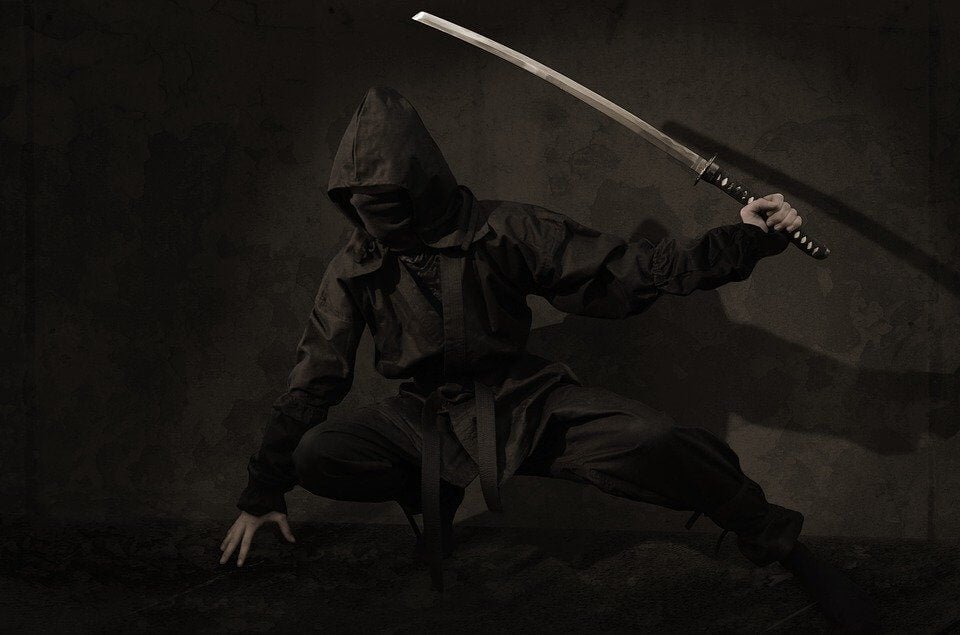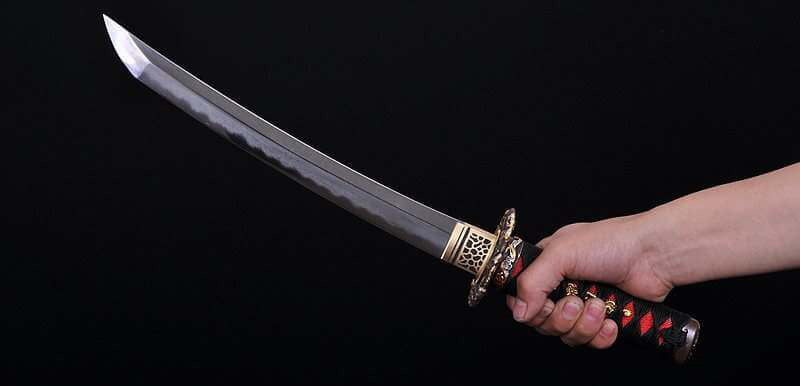
Ninjutsu, also known as ninpō in today’s modern world, refers to any type of unconventional tactics or strategy, including espionage and guerrilla warfare. Most famously, the history of ninjutsu starts in Japan and is associated with a separate martial arts discipline studied by the ninjas. If you’re interested in learning a little more about the beginnings and evolution of ninjutsu, explore this blog for all the details.
History of Ninjutsu
There is technically no origin or founding date for ninjutsu. The closest similar style of fighting and martial arts is historically referred to as shinobi, which refers to assassins, scouts, and spies. The ninja as we know it today doesn’t really exist but evolved out of a blend of different ideas and disciplines, including shinobi.
As far as historians can tell, the history of ninjutsu probably begins around the 6th century BC. We can find references to early Japanese military strategy that included subterfuge in the teachings of Sun Zi, author of Art of War, as well as records from the military minds of Se Ma and Zi. You might even have heard of famous leaders of ninja clans throughout Japanese history like Mochizuki Chiyome, Hattori Hanzo, and Kazama Fuma Kotaro.
Spying & the History of Ninjutsu

The first recorded usage of ninjutsu or shinobi was probably in a military campaign during the Genpei War between 1180 and 1185. Minamoto no Kuro Yoshitsune, a commander throughout the war, assigned soldiers to serve as shinobi, scouting ahead of the troops, spying on enemies, and in rare cases, assassinating high-level officials. There are also references to ninjutsu and shinobi in the Nanboku-cho period, when samurai warriors developed the subtle art of spying even further and continued enhancing ninjutsu training.
Throughout the history of ninjutsu, shinobi warriors were used far more often as scouts and spies than as assassins. Stealth, deception, and secrecy are the primary weapons of the ninjutsu warrior.
Ninjutsu as a Martial Art
Ninjutsu is not technically its own, stand-alone martial art. Instead, it is a blend of other conventional styles, like taijutsu, kenjutsu, shurikenjutsu, bōjutsu, sōjutsu, and a few others. Ninjutsu training and lineage is still disputed among martial arts organizations, with several schools claiming to be the only legitimate practitioners.
With so many different schools teaching their version of this martial art, it makes the history of ninjutsu even murkier and more confusing.
Fundamental Ninjutsu
At its most basic level, ninjutsu is fundamentally a survivalist martial arts style. The style helped samurai warriors survive the turmoil of violent political uprisings. Information gathering, misdirection, avoidance, and non-detection are all essential parts of ninjutsu training. Most warriors learned some elements of freerunning, archery, concealment, disguise, basic field medicine, and escape. These highly trained warriors became known as shinobi no mono.
Ninjutsu Weapons

While many people think of ninja stars and knives as the weapon of the ninjutsu warrior, they probably used similar weapons to every other warrior in feudal Japan. Someone looking to blend in wouldn’t differentiate themselves with such ostentatious weapons! The most common weapons seemed to be the ninjato, a long sword with a straight blade, and the tanto, a knife with a curved spine and drop point.
Ninjas in Pop Culture
The history of ninjutsu has definitely struck a chord with audiences around the globe, with movies and books transforming this shadowy warrior class into something a little more legendary. Lightning-fast combat skills and a superhuman ability to disappear probably arose from the practice of Kuji-Kuri during the height of ninjutsu training in feudal Japan.
Ninjutsu & Kuji-Kiri

A religious practice that supposedly allowed warriors to interact with the spirit world, Kuji-Kiri includes specific hand gestures and possibly incantations. The theory is that Taoism and Buddhism inspired Kuji-Kiri as they spread across Japan. A series of unique gestures, known as mudras, were supposedly able to allow a Taoist or Buddhist monk to perform healings, spiritual rituals, and exorcisms.
Ninjutsu took on these hand gestures and made them their own to enhance their skills. Some of the more supernatural effects of using Kuji-Kiri range from more intense mental and physical concentration that allowed ninjas to perform superhuman feats of strength and speed to casting spells that rendered their opponents immobile.
Ninjas at Swords of Northshire
Hopefully, this overview of the history of ninjutsu provided you with a little more appreciation for the development of today’s contemporary ninja. These warriors were more than just the mysterious fighters that Hollywood depicts in glamorous movies; they were an integral part of the culture in feudal Japan.
If you want to learn more about ancient Japanese history and culture, explore the Swords of Northshire blog today!









